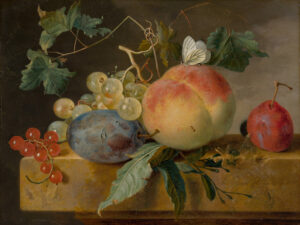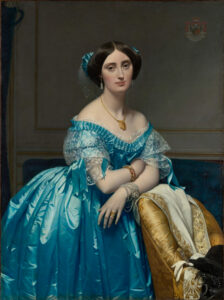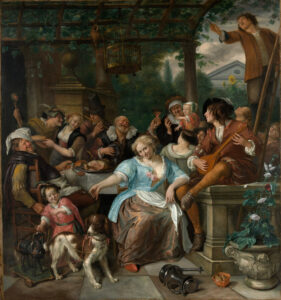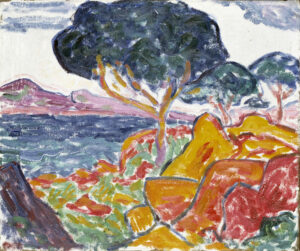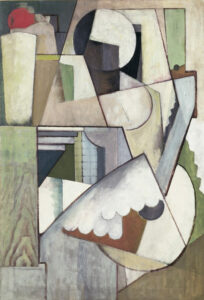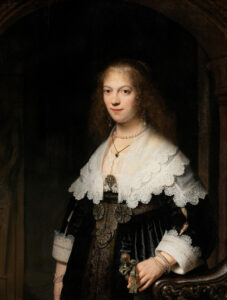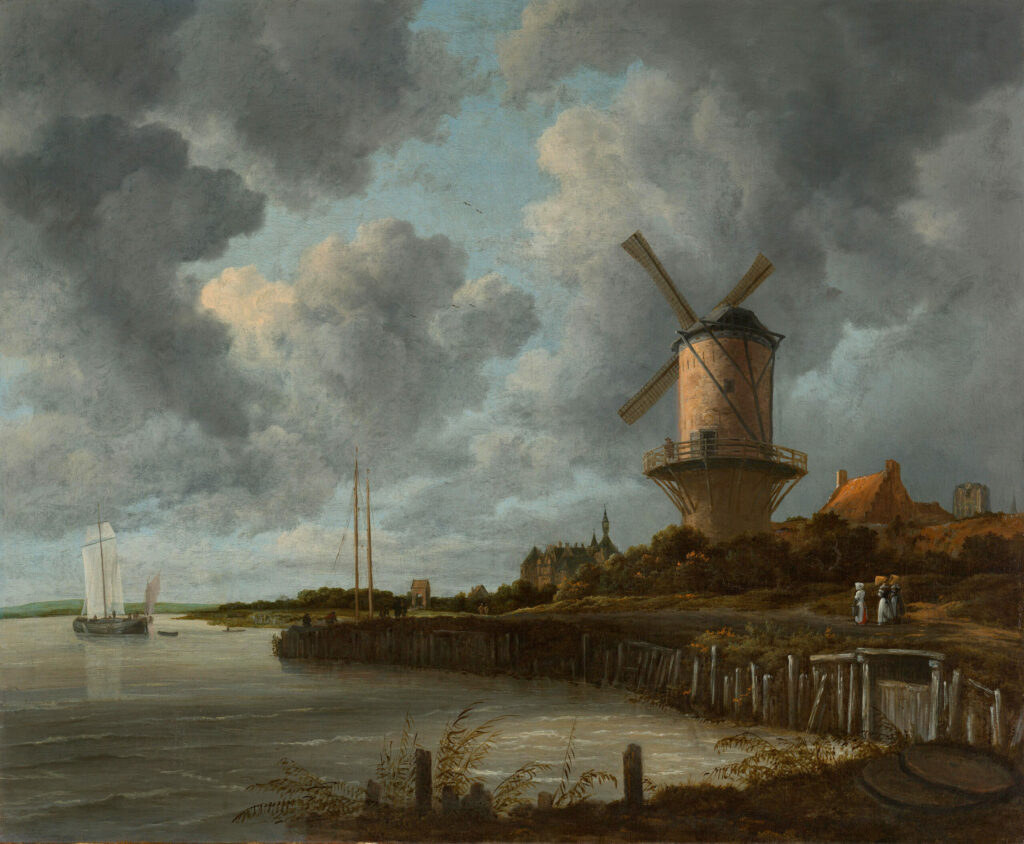
The Windmill at Wijk bij Duurstede illustrates the pinnacle of Dutch Golden Age landscape art.
Painted between 1668 and 1670, this emblematic work by Jacob van Ruisdael masterfully synthesizes the constituent elements of Dutch identity: vast expanses of water, dramatic skies, and vernacular architecture. The pyramidal composition converges toward the cylindrical windmill, the true protagonist of the scene, which proudly dominates the castle and church of Wijk bij Duurstede. The Lek River in the foreground reflects the changing light while boats punctuate the aquatic horizon. The chromatic palette contrasts the golden ochres of the windmill with the stormy grays of the sky, creating a striking effect. Ruisdael transforms a familiar landscape into a grandiose vision, revealing the beauty of the Dutch lowlands and human ingenuity in the face of the elements.
Further information
- The Windmill at Wijk bij Duurstede, by Jacob Isaacksz van Ruisdael, c. 1668 – c. 1670
- 83 x 101 cm, oil on canvas
- Rijksmuseum, Amsterdam
- https://www.rijksmuseum.nl/en/collection/object/The-Windmill-at-Wijk-bij-Duurstede–fb2b57919550092bf709472f81426eab
Jacob Isaacksz van Ruisdael (1628-1682), undisputed master of Dutch Baroque landscape painting, revolutionized the representation of nature through his dramatic and melancholic vision. Born in Haarlem into a family of painters, he likely trained under his uncle Salomon van Ruysdael before developing a personal style of rare intensity. Unlike his contemporaries who often favored idyllic views, Ruisdael explored the wildest and most theatrical aspects of nature: tormented skies, tumultuous waterfalls, dark forests, and melancholic ruins. His work testifies to meticulous observation of Dutch reality. Established in Amsterdam from 1656, he profoundly influenced the Dutch landscape school and inspired future generations. His ability to infuse prosaic motifs with a metaphysical dimension makes him a precursor to pictorial modernity.

